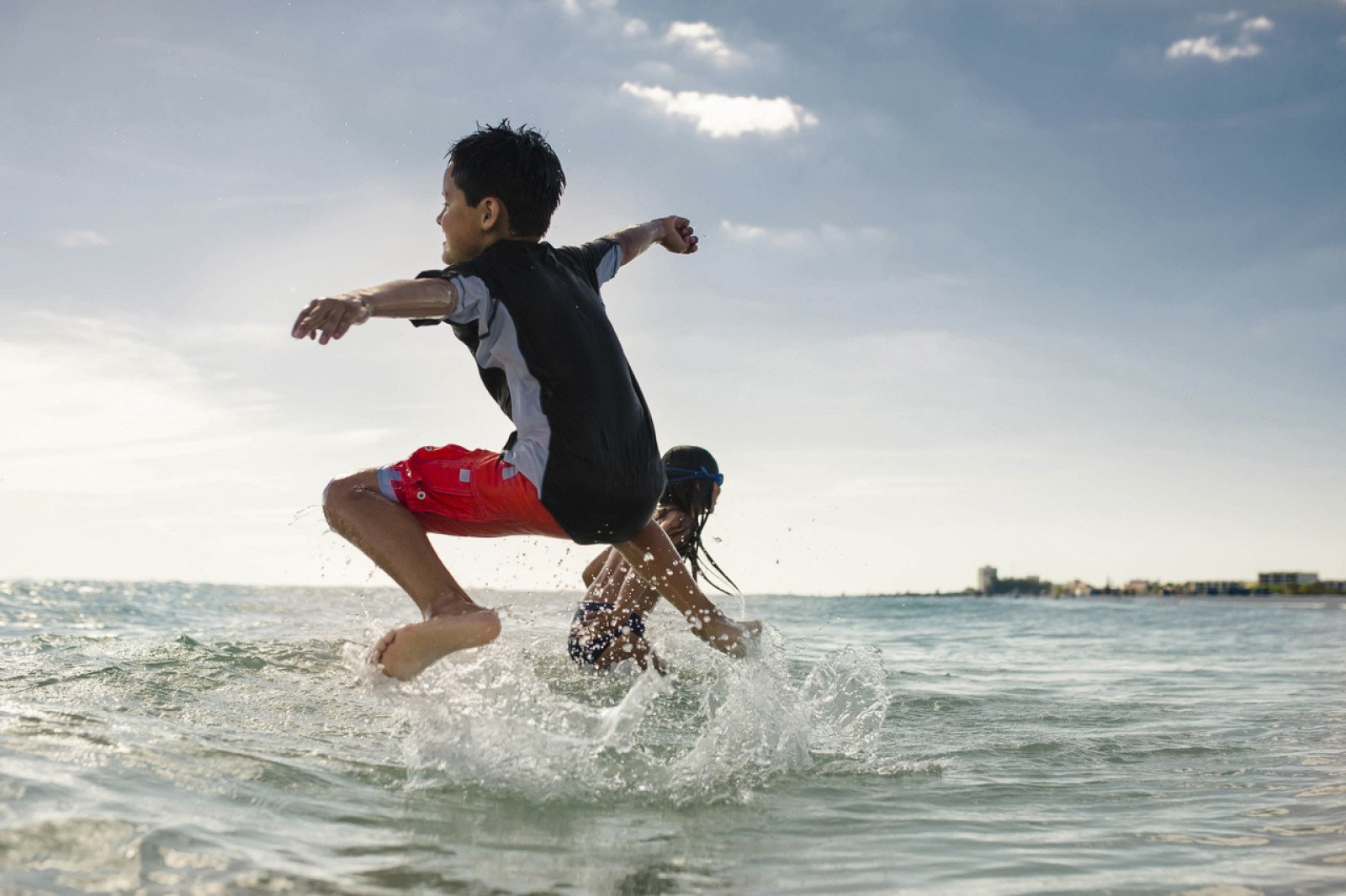Energy
Making a "forms of energy" collage
Use cooperation and creativity to make a collage of all the different types of energy.

Overview
Students are introduced to 10 forms of energy and put their scientific and creative skills to work by making a collage that represents the different types.
Instructions
What you'll need
- Magazines, brochures and newspapers
- Glue
- Scissors
- Construction paper
- "10 forms of energy" slideshow
- Energy is everywhere and it makes things happen all around us. Have students try to name all the different types of energy and write their ideas on the board.
- Show the "10 forms of energy" slideshow and ask the class to suggest other examples of each energy type.
- Recap by looking at the forms of energy on the board from step 1 and add to the list based on what students picked up from the slideshow. What questions do students have about the different forms of energy?
- Get small groups working together to find magazine and newspaper pictures that represent the 10 forms of energy. They can also draw pictures.
- Have each group share their understanding of the topic by presenting their collage to the rest of the class.
Modify or extend this activity
Extensions
- Ask students to look for examples of different forms of energy on their way home from school and share them during the next class
- Check out “You're it!”, “Energy wonder wall” and “Marble run challenge” for more activities about forms of energy and energy transformations
Curriculum Fit
Grade 4 Science
Content
- Energy has various forms
Curricular competencies
Questioning and predicting
- Demonstrate curiosity about the natural world
- Make predictions based on prior knowledge
Applying and innovating
- Co-operatively design projects
Assessments
- Assess prior knowledge during the first part of the activity.
- Listen to group presentations to assess basic understanding of 10 forms of energy.
Teaching Notes
What is energy?
Energy is the ability or capacity to do work. Energy makes change possible. It is the power or ability to make things happen.
Forms of energy
Energy is all around us. The 10 forms of energy are listed below :
- Electrical energy is produced by the flow of an electric charge. We see or hear the result of this energy as something that turns on, lights up or gets warmer.
- Light energy travels in waves and is visible to us. Light energy is produced by sources such as the sun, fire or light bulbs.
- Sound energy is produced by vibrating objects and travels as sound waves. We hear sound energy in music, birds singing or a fireworks display.
- Thermal (heat) energy is produced by a number of sources such as the sun, a campfire and the oven. We feel this energy as warmth.
- Nuclear energy is stored in the nucleus of an atom and can be released when a heavy nucleus is split into two lighter nuclei (fission) or when two light nuclei join together into one bigger nucleus (fusion). The sun generates its energy through nuclear fusion. This energy can also be released to generate electricity.
- Elastic energy is stored in objects that can be stretched or compressed. We feel the tension when things bounce or are stretched.
- Chemical energy is stored in the bonds of molecules. Chemical energy can be found in food, a battery, gasoline and wood. When the energy is released it transforms into another form of energy. The chemical energy in a battery can be transformed into light energy in a flashlight.
- Magnetic energy is stored within a magnetic field and causes metals to attract or repel each other.
- Kinetic energy is the energy of motion. We can see this energy as things move and change position such as a skateboarder, a skier going downhill or a person walking.
- Gravitational energy is stored in an object due to its height and is caused by the pull of gravity. We see the result of this energy when something falls or feel it when we are jumping off a diving board.






